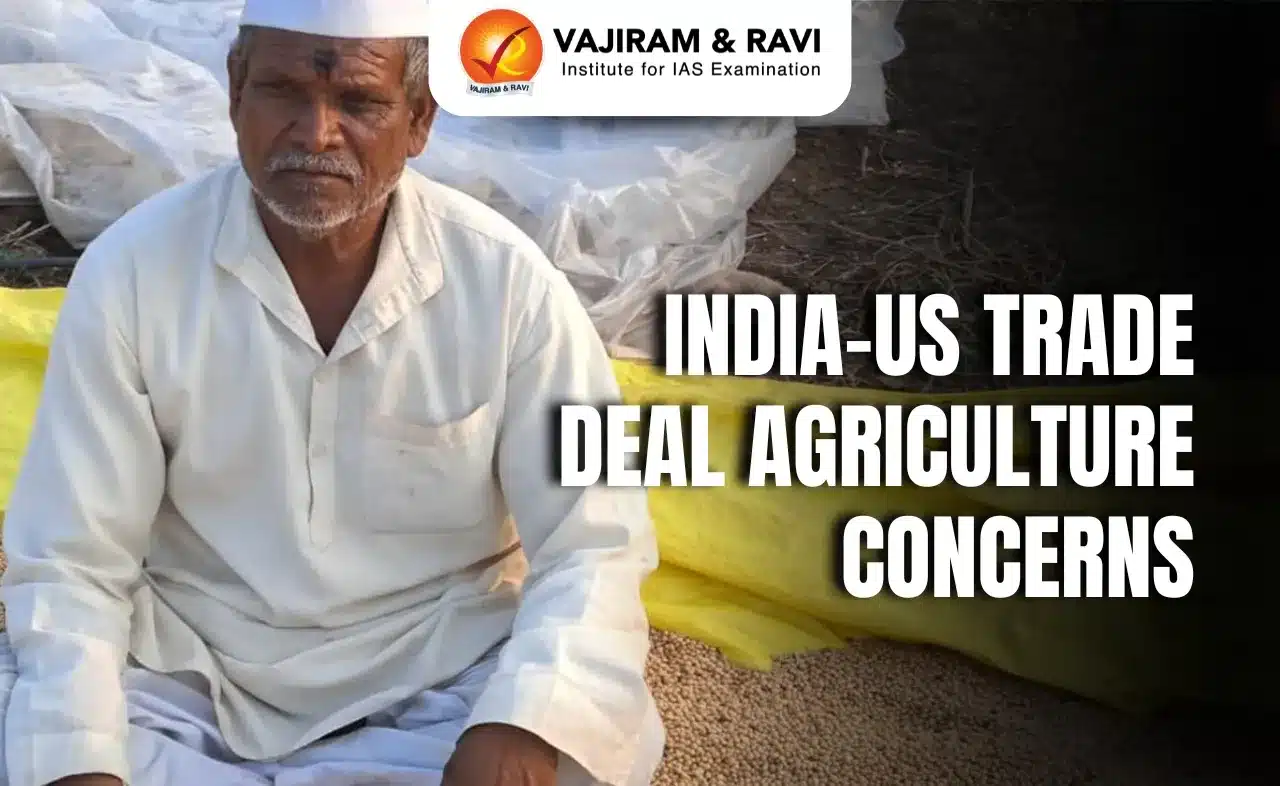What’s in today’s article?
- Why in News?
- Edible Oil Scenario in India
- Report on ‘Pathways and Strategies for Accelerating Growth in Edible Oils Towards Atmanirbharta’
Why in News?
- The Ministry of Finance issued a notification to increase import duty on edible oils from 0% to 20%.
- This will take the total effective duty on edible oils to 27.5% (after adding other components) – an attempt by the world’s biggest edible oil importer to support local oilseed farmers.
- This comes days after the Centre allowed soybean (the leading source of edible oils) procurement at Minimum Support Price (MSP) in 4 states – Maharashtra, MP, Karnataka and Telangana.
Edible Oil Scenario in India:
- What are edible oils?
- Edible oils are mainly vegetable oils that are subjected to several refining processes (such as neutralisation, bleaching and deodorisation) to remove undesirable constituents.
- Regarding consumption as a food product, vegetable oils are considered the healthier alternative as they contain more unsaturated fatty acids than animal fats.
- Overall scenario of edible oil availability in India:
- India contributes about 5-6% of the world oilseeds production, accounting for the estimated production of 41.35 million tons (MT) of nine cultivated oilseeds during the year 2022-23 (November-October).
- Export of oil meals, oilseeds and minor oils was about 3.46 MT in the financial year 2022-23 valued at Rs 14,609 crores.
- Area and production of oil seeds in India:
- Regional variation in edible oil production:
Report on ‘Pathways and Strategies for Accelerating Growth in Edible Oils Towards Atmanirbharta’:
- About the report: It was released by the NITI Aayog to comprehensively explore the current state of the country’s edible oil sector and its future potential.
- Highlights of the report:
- The report highlights that over the past decades, per capita consumption of edible oil in the country has seen a dramatic rise, reaching 19.7 kg/year.
- This surge in demand has significantly outpaced domestic production, leading to a heavy reliance on imports to meet both domestic and industrial needs.
- In 2022-23, India imported 16.5 MT of edible oils, with domestic production fulfilling only 40-45% of the country’s requirements.
- This situation presents a substantial challenge to the country’s goal of achieving self-sufficiency in edible oils.
- Roadmap to address existing challenges:
- The report focuses on bridging the demand-supply gap and developing new approaches to attain self-sufficiency.
- Under a Business-As-Usual (BAU) scenario, the national supply of edible oil is projected to increase to 16 MT by 2030 and 26.7 MT by 2047.
- Strategic interventions to achieve self-sufficiency in this sector:
- Crop retention and diversification.
- Horizontal expansion: This strategy seeks to bring more land under cultivation for specific oilseeds.
- Vertical expansion: It focuses on enhancing the yield of existing oilseed cultivation. This can be achieved through improved farming practices, better-quality seeds, and advanced production technologies.
- Developing a dynamic trade policy for balanced growth.
- Broadening the scope of the National Mission on Edible Oils, etc.
Q.1. What is the National Mission for Edible Oils – Oil Palm (NMEO-OP)?
The Government of India launched the NMEO-OP in 2021 to escalate oil palm cultivation and elevate Crude Palm Oil production to 11.20 lakh tonnes by 2025-26.
Q.2. How is the insufficiency in edible oil negatively impacting India?
India is presently a net importer of edible oil, with 57% of the total edible oil being imported from various countries. The insufficiency in edible oil is negatively impacting India’s FOREX by 20.56 billion USD, making it more important for the nation to become self-sufficient in the production of edible oil.
Last updated on June, 2025
→ UPSC Notification 2025 was released on 22nd January 2025.
→ UPSC Prelims Result 2025 is out now for the CSE held on 25 May 2025.
→ UPSC Prelims Question Paper 2025 and Unofficial Prelims Answer Key 2025 are available now.
→ UPSC Calendar 2026 is released on 15th May, 2025.
→ The UPSC Vacancy 2025 were released 1129, out of which 979 were for UPSC CSE and remaining 150 are for UPSC IFoS.
→ UPSC Mains 2025 will be conducted on 22nd August 2025.
→ UPSC Prelims 2026 will be conducted on 24th May, 2026 & UPSC Mains 2026 will be conducted on 21st August 2026.
→ The UPSC Selection Process is of 3 stages-Prelims, Mains and Interview.
→ UPSC Result 2024 is released with latest UPSC Marksheet 2024. Check Now!
→ UPSC Toppers List 2024 is released now. Shakti Dubey is UPSC AIR 1 2024 Topper.
→ Also check Best IAS Coaching in Delhi



























